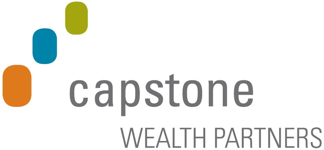5 Keys to Getting the Most Financial Aid
By Joe Messinger, CFP®
December 1, 2023
Every year, students and their parents complete the Free Application for Federal Student Aid (FAFSA). Every year, parents wonder, “What’s the point?!”
The FAFSA is a tool used by the government to calculate a student’s need for aid when paying for college. When the FAFSA goes live every October 1st (in 2023, hopefully by December 31st), it may be too late to maximize a student’s and their family’s numbers. If you’re looking for more assistance in financial aid, understanding a few key points and careful preplanning can maximize your benefit and get you the most financial aid.
1. Understand what prior-prior year (PPY) means.
The FAFSA uses prior-prior year numbers in the calculation. When high school seniors complete their FAFSA in the fall of their senior year, they apply for aid for the following school year–the year they’ll begin college. In the process, they will use their (and their family’s) most current federal tax information, filed the previous April (when they were a junior). That tax filing is for the previous year (spring of sophomore year/fall of junior year).
To get the most financial aid, the student and family want to have the lowest income numbers during the tax year, that is, the spring of sophomore year in high school and the fall of junior year. This is called the “base year” and provides the basis for the financial aid package for all four years.
Parents might request that a December bonus be postponed until January. If you are a small business owner, consider accelerating expenses into the base year. Try not to sell off investments and be subject to capital gains during this timeframe. It may be better to do that the year before (spring of freshman year/fall of sophomore year).
2. Consider repositioning student’s assets.
The student and the parents report their current checking, saving, and investment values in the FAFSA calculation. (Retirement is excluded. 529 plans are included.) Assets in the student’s name are assessed at a rate of 20%. Assets in the parents’ names are assessed at a rate of 5.64%. In addition, a portion of the parent’s assets are protected from being assessed due to the Asset Protection Allowance.
The value of the assets will be reported as of the date the FAFSA is completed. (Not a worry for sophomore or junior year!). A minor cannot simply gift the money to their parents. However, they can spend it on their needs–perhaps on things needed for college or ACT/SAT test tutors, or a car.
As an aside, do NOT use insurance products to shelter money. They are high premium, low return, fee-heavy vehicles that earn high commissions for those selling them. It can take many years for the cash value to accumulate.
If the student is saving money for college, tap into it at the beginning of their college years and use it first. Save parental money until the later years. The FAFSA is completed every year. Using those student assets first will remove that 20% hit from your calculation.
3. Use parental savings to pay off high-interest debt.
Parents should consider paying off high-interest credit cards and car loans, or making extra mortgage payments. Not only will that lower their total asset value, which is subject to that 5.64% we mentioned, but it will also put them in better financial health. Lower debt is always a good thing. (Maybe parents even consider making larger expenditures that they’ve been putting off, like paying for a new roof.)
4. Be exact in your reporting.
Pay attention to what information they are asking you for. Read the definitions for what items are included in your investments and what items are not. For example, the value of your house is not included. Real estate that you do not live in counts as an investment. So does a unit in your home with its own entrance, kitchen, and bath, which is rented to someone outside your family. Pay close attention to those definitions to not report more than you should.
Remember, the investment value is the current balance or market value as of the day you complete the FAFSA.
For dependent students, 529 plans are reported as parental assets. This includes plans owned by the student and all plans perhaps for other children owned by the parents. If a family has three students with three 529 plans, the balance for all three must be reported–not just the child who is applying at that moment.
5. Fill out the FAFSA as early as you can.
Need-based aid is first come, first served, and the pot of money that colleges have to offer is only so big. One way to get the most financial aid is for your student should file as soon as possible if they might be a need-based aid candidate before the money runs out.
Qualifying for need-based aid can be difficult, but sometimes a family might be surprised by what colleges can offer based on their unique financial situation. They may find they qualify at some schools with high costs, but the college meets 100% of need. It is worthwhile to make smart financial decisions and plans to do what you can.
Updated December 2023


